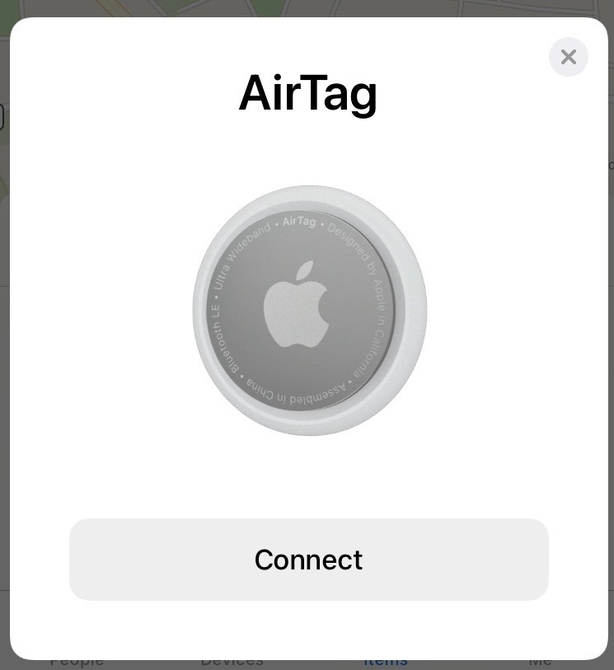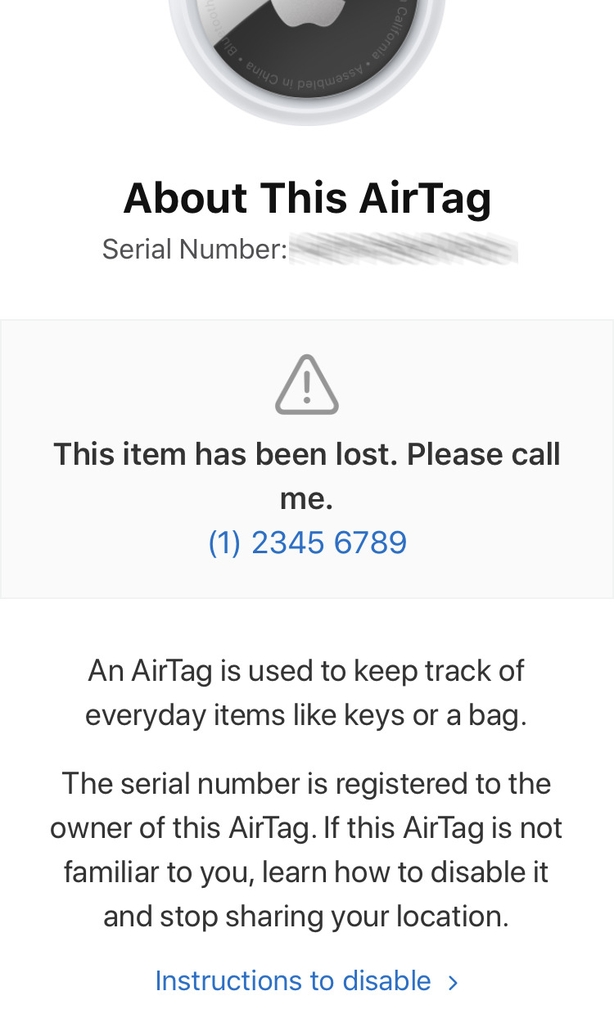If you’re the kind of person who tends to lose track of your keys on a regular basis, you may have at one stage tried one of those keyrings that beep when it "hears" a whistle.
Think of the Apple AirTag as a high-tech version of that - the big difference being that they work.
Shaping up a little bit bigger than a €2 coin, an AirTag is essentially a Bluetooth transmitter with a tiny speaker attached. The sales pitch is that it can be attached to items that might easily go missing - like your keys - so you can more easily find them through your phone or tablet.
It’s not a new idea - Tile has been doing it for close to a decade now - but Apple’s scale is what makes it stand out from the crowd.
The tag itself cannot connect to GPS or the internet - but it can piggyback on the connections of nearby iPhones, iPads and Macs. And with more than one billion Apple smartphones in active use around the world alone, the odds are good that it can do so quickly.
This gives the AirTag a massive advantage over the likes of Tile, which has a much smaller userbase, and is reliant on people using its app in order to help locate nearby items.
The fact that AirTags are competitively priced (€35 each, or €29.75 each when bought in a four pack) also makes them a real challenger to rival options.
Getting on track
Setting up an AirTag is easy - remove a plastic tab, hold it near your iPhone and assign it to an item. After that it will appear in Apple’s 'Find My’ app, which shows you the location of your Apple devices.

The most regular use for an AirTag is likely to be in locating a nearby-but-temporarily missing item - like your keys. When that happens you can use the Find My app (or Siri) to play a sound on the tag itself.
Alternatively, if you have a newer iPhone, you can get directions to its exact location.
If your item is properly lost, you can mark it as such on the Find My app so you’re notified when another iPhone detects it, wherever it is. Whenever that happens you will be able to see its most recent location on a map.
You can also leave a message with the tag, like a phone number, which could be seen by anyone that finds it (tapping the tag with their phone brings them to a website where any message is displayed).

In testing, this feature works well - with the tag able to update its location on a regular basis. That being said, its reliance on nearby devices means the hit rate is sure to drop off in less populated areas.
Privacy concerns
Apple has made privacy a major selling point in recent years - and a tracking device that taps into other people’s phone connections may seem at odds with that.
However Apple promises the AirTag piggybacks on other devices anonymously - meaning your iPhone could automatically locate someone else’s AirTag without you knowing, and without them finding out anything about you.
The tags are also tied to one user - meaning no-one else can see an item’s location, while Apple says it does not store location data or history.
Despite this concern has been expressed about their potential for misuse by stalkers, or people trying to keep tabs on their partner, who might covertly place one in a bag or car.
The tags do begin to sound an alarm once separated from an owner for three days to mitigate against this - however it has been pointed out that that is a long time to be getting tracked unwittingly.
In testing, an iPhone actually turns out to be far quicker in warning users about a potential tracker.
Within an hour of taking a tag registered to another user for a drive, a warning appeared, showing a decent approximation of the route taken and an option to disable the device.


However that example underlines the main limitation of the AirTag.
The walled garden
AirTags work extremely well for Apple users - but are next to useless for anyone with an Android.
Setting up an AirTag requires an iPhone or iPad and locating a tag requires an iPhone or iPad.
People may be quickly warned of an AirTag tracking them, but only if they themselves have an iPhone. If Android user unknowingly had an AirTag on their person, they’d only find out when it started beeping after a few days.
Much like its Watch, HomePod Mini and, to a lesser extent, AirPods, this is another example of an Apple device that "just works"… but only if you’re already heavily invested in its ecosystem.
Always accessorise
Another classic Apple move is to strongly encourage users to buy accompanying accessories - and the AirTag is no different there either.
The tags are designed without any kind of loop built-in, meaning a holder will be needed to attach it to most things. Apple sells compatible holders for €35-45, but cheaper (or more expensive) options are available through its store, as well as the likes of Amazon and Etsy.
Its form-factor also means that the tags may not be useful in certain cases - for example it might not fit in a small wallet or purse, or easily attach to the likes of an often-misplaced remote control.
The tags are also unequivocally not an anti-theft device.
For a start, a clearly displayed tag can simply be removed and dumped. But even a hidden one could be found and disabled quite easily - in part due to Apple’s attempt at protecting people’s privacy.
And, its privacy focus means the use-cases of the tags are unnecessarily limited.
Having the tags confined to one person as a default is a good thing - but there are cases where giving multiple users access would be useful, and that is currently not possible.
That means that a shared item - or even the family pet - has to be assigned to one person, with their location unavailable to everyone else. This is something Apple could easily fix in a future update, but whether it plans to or not is another thing.







